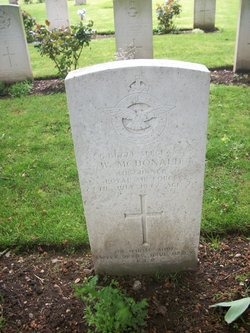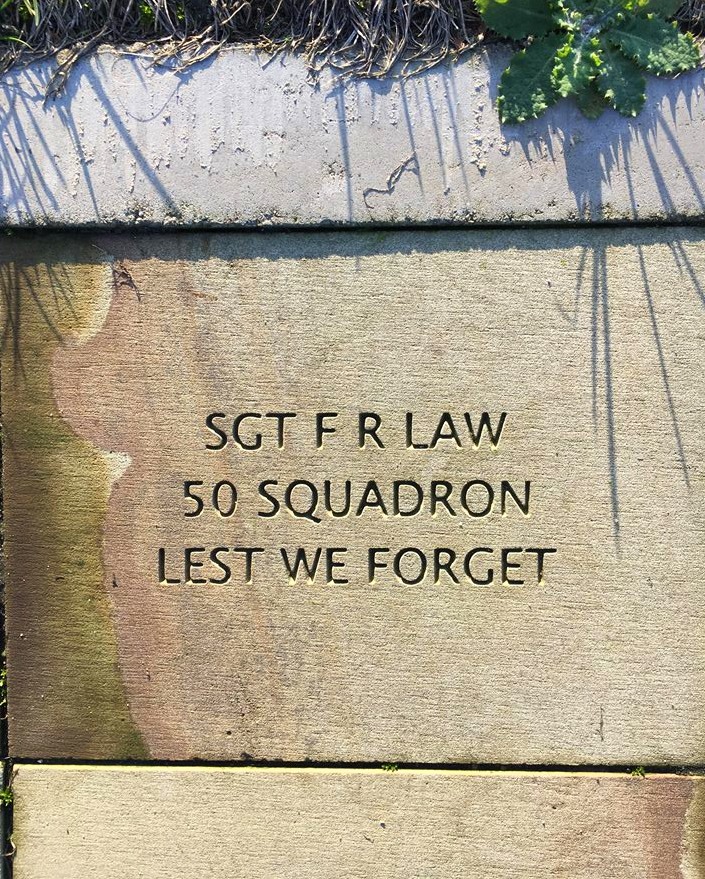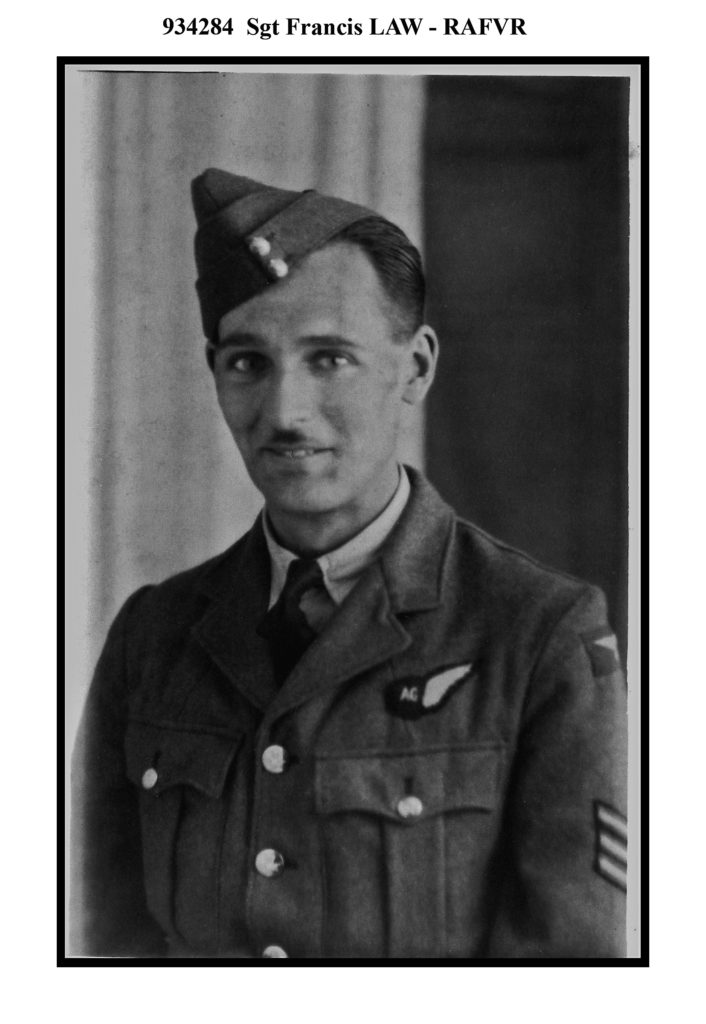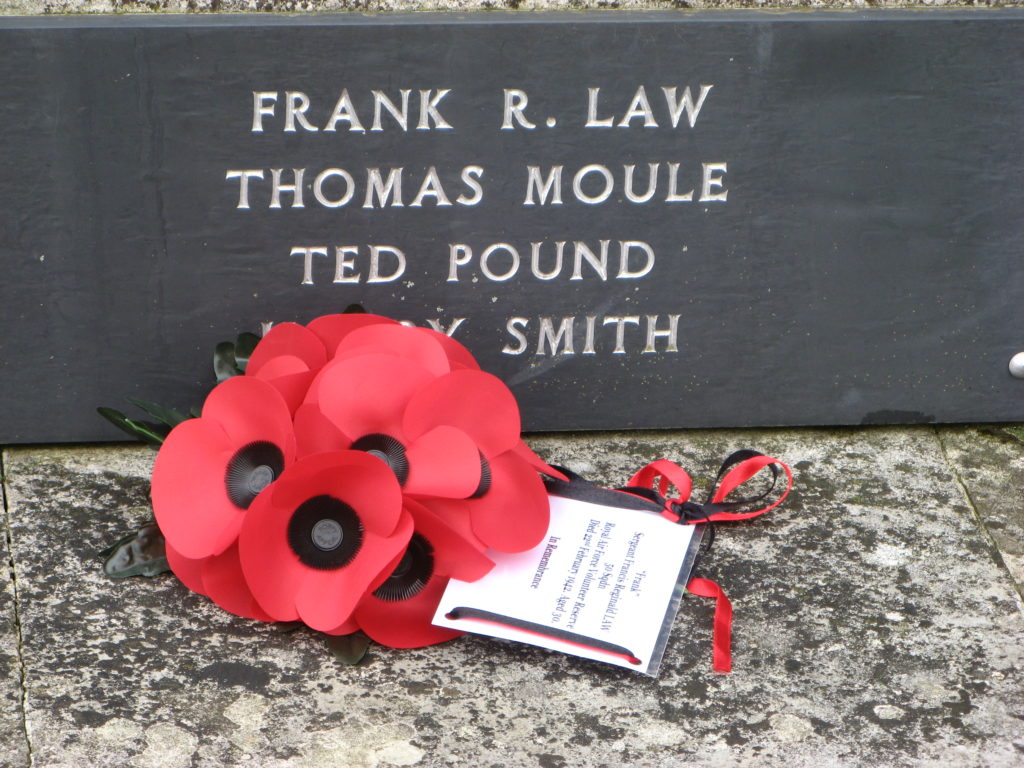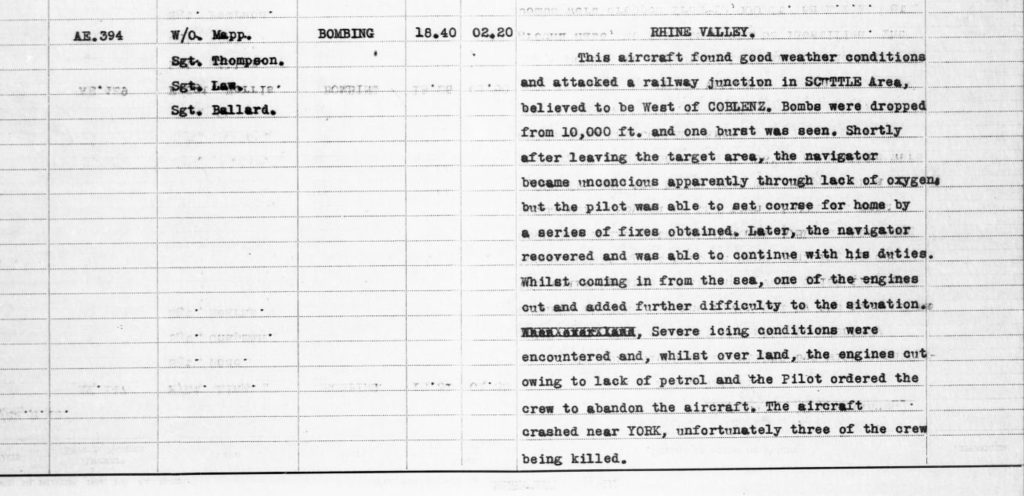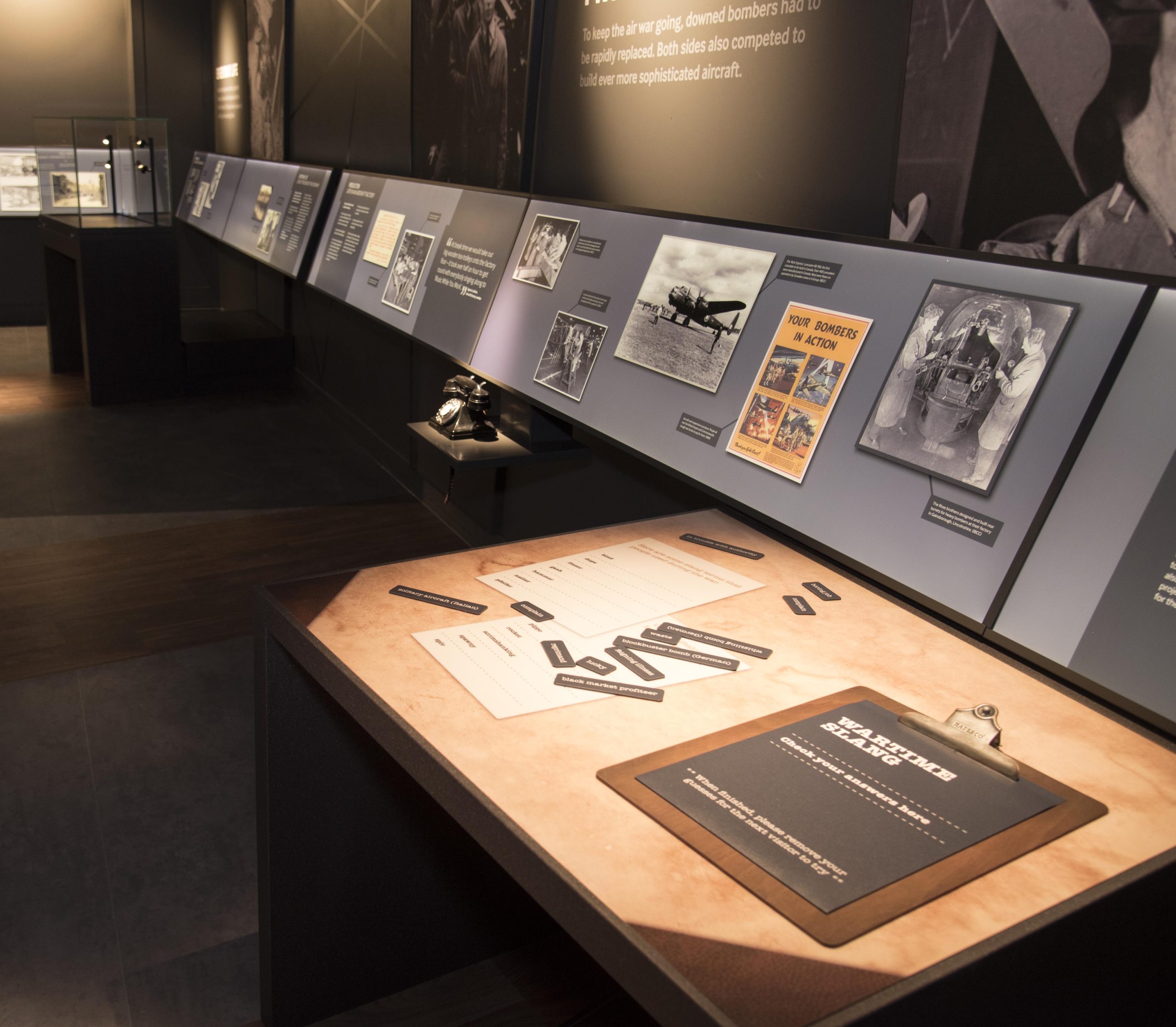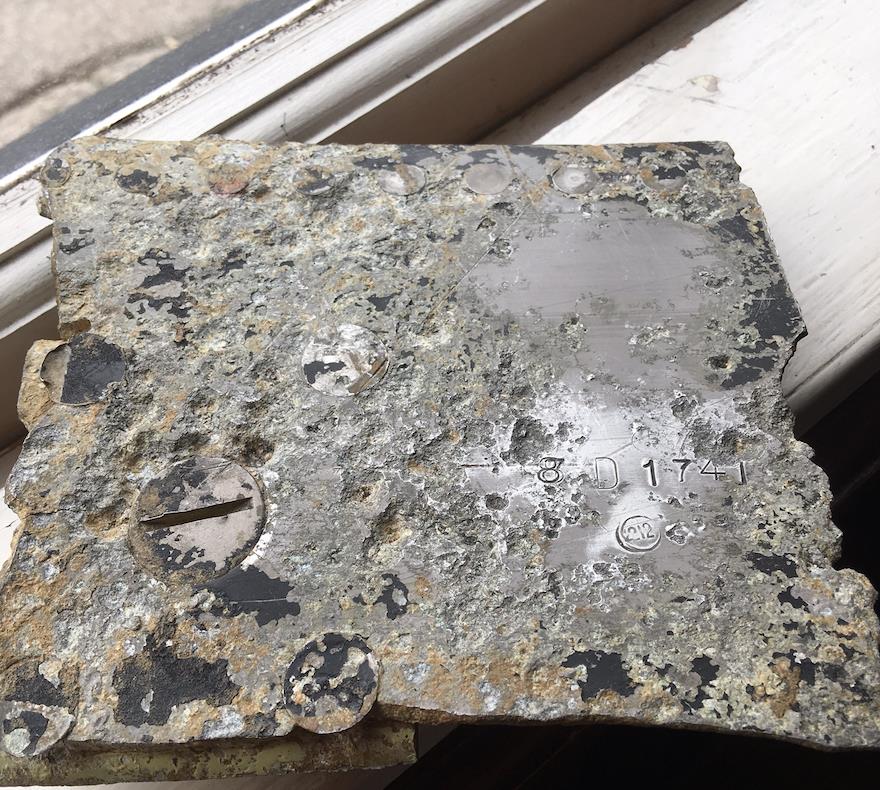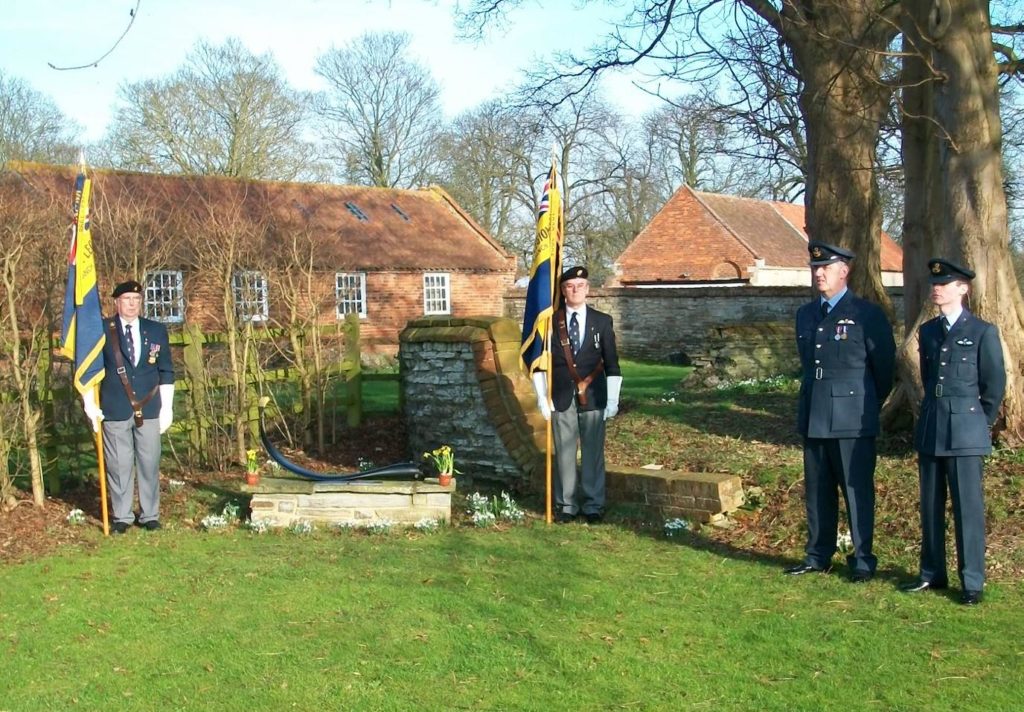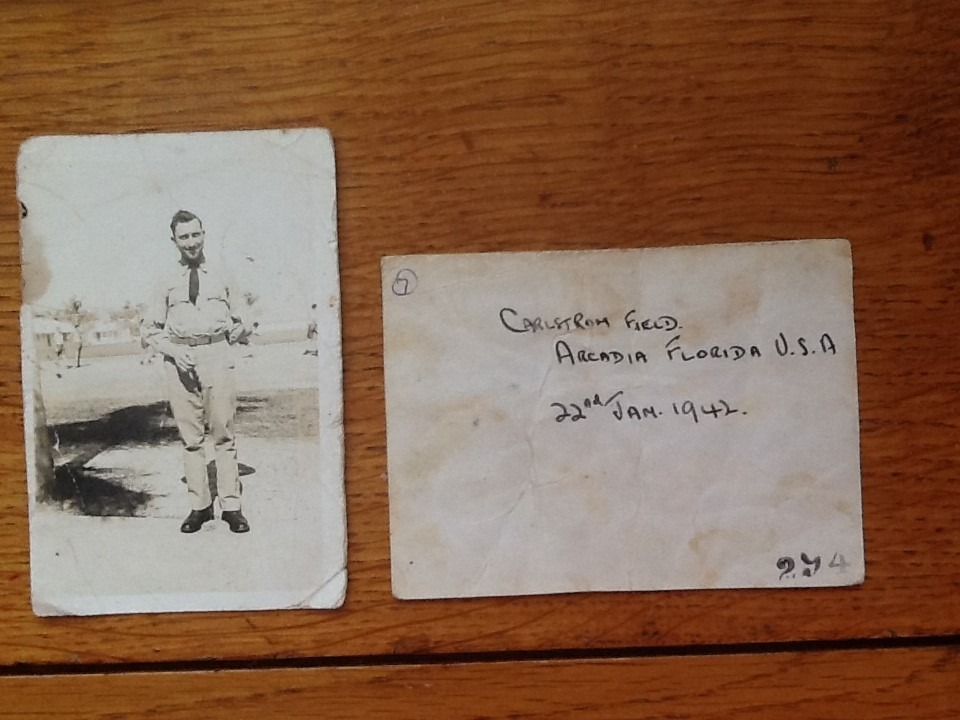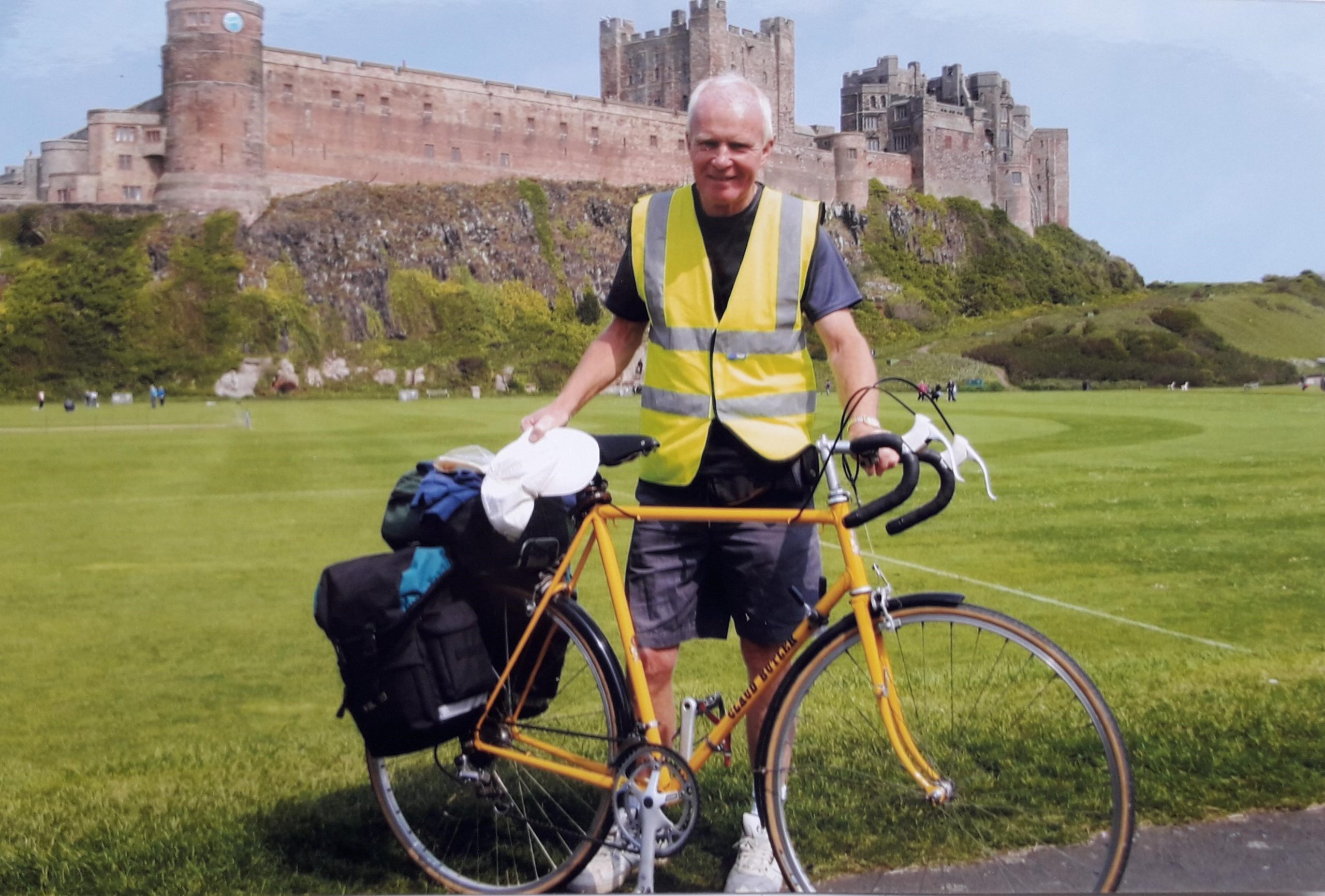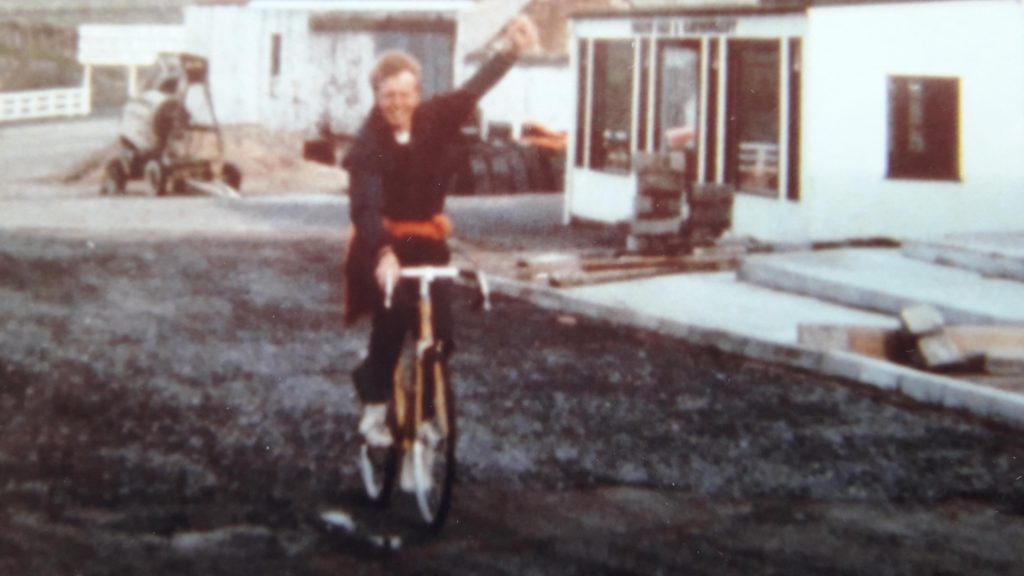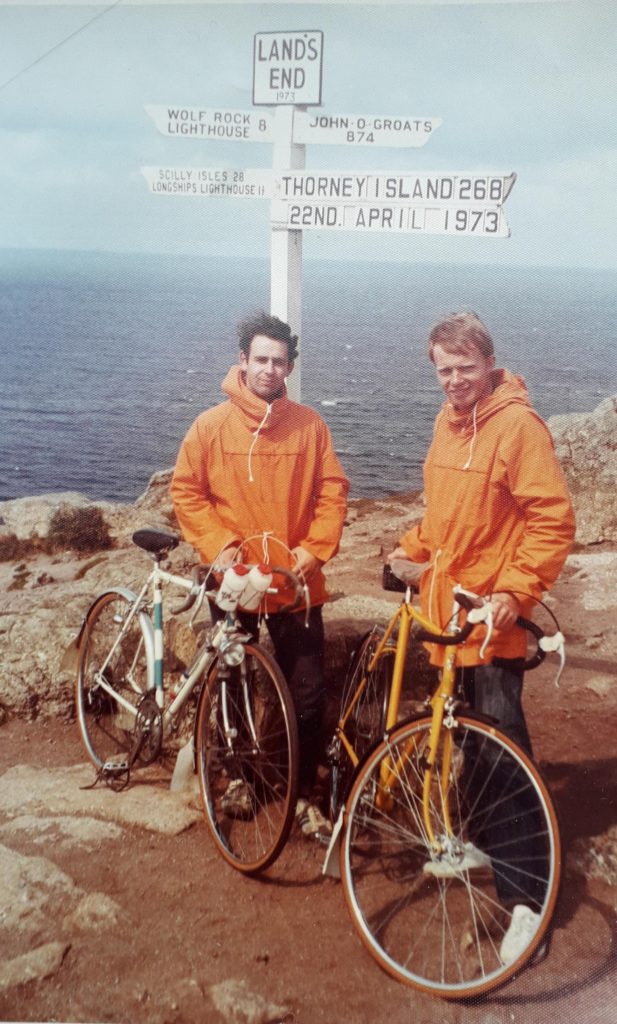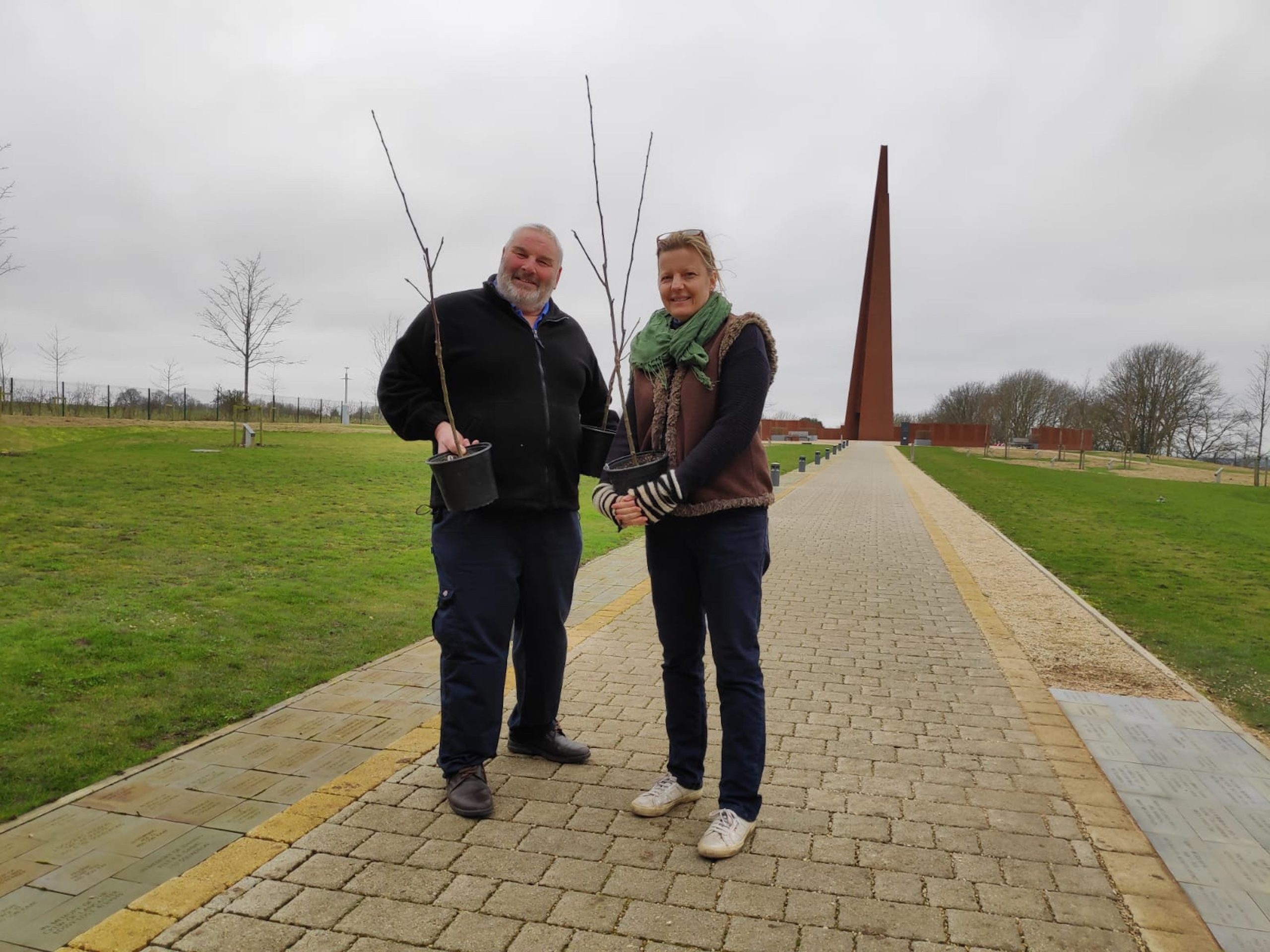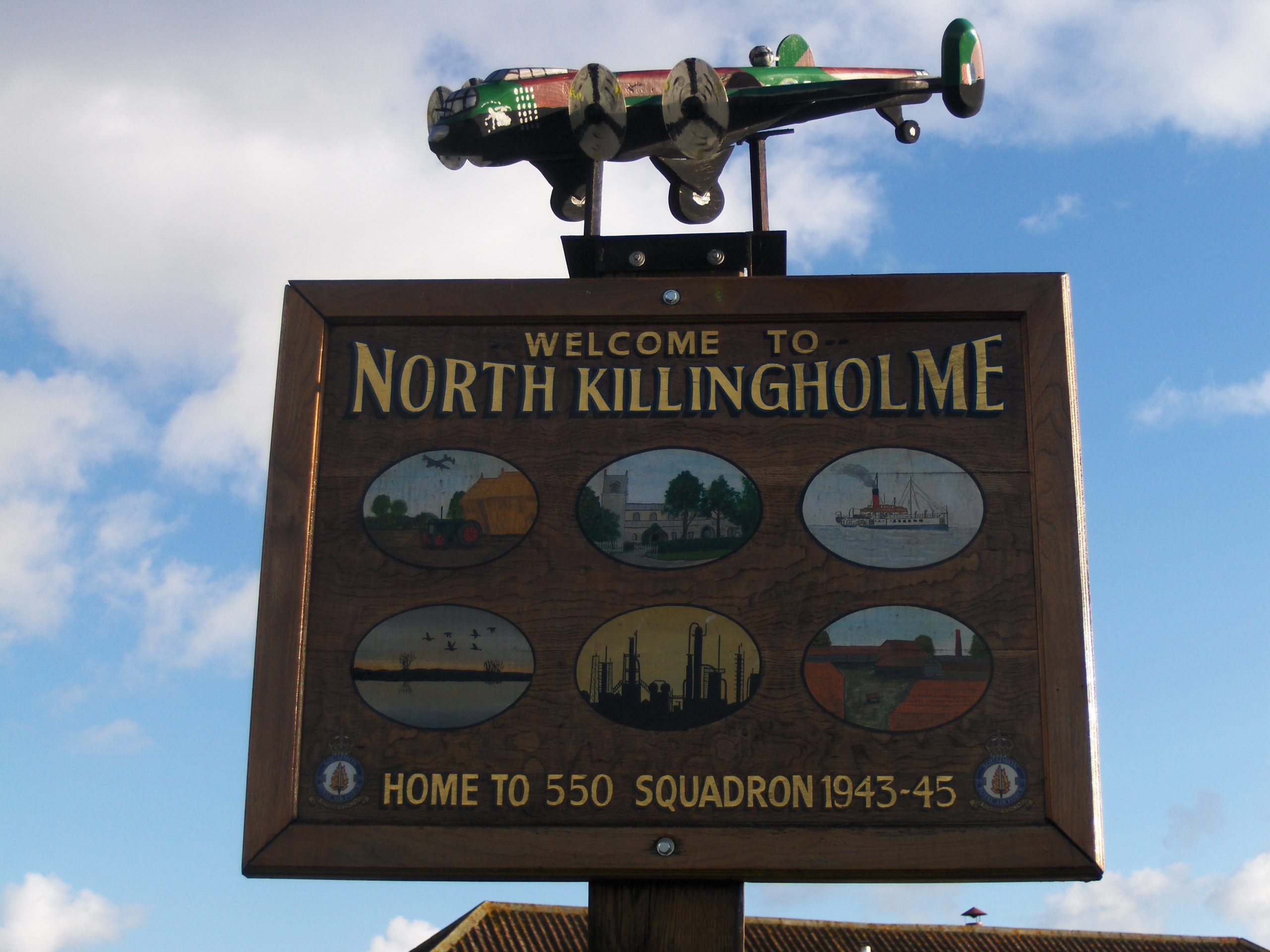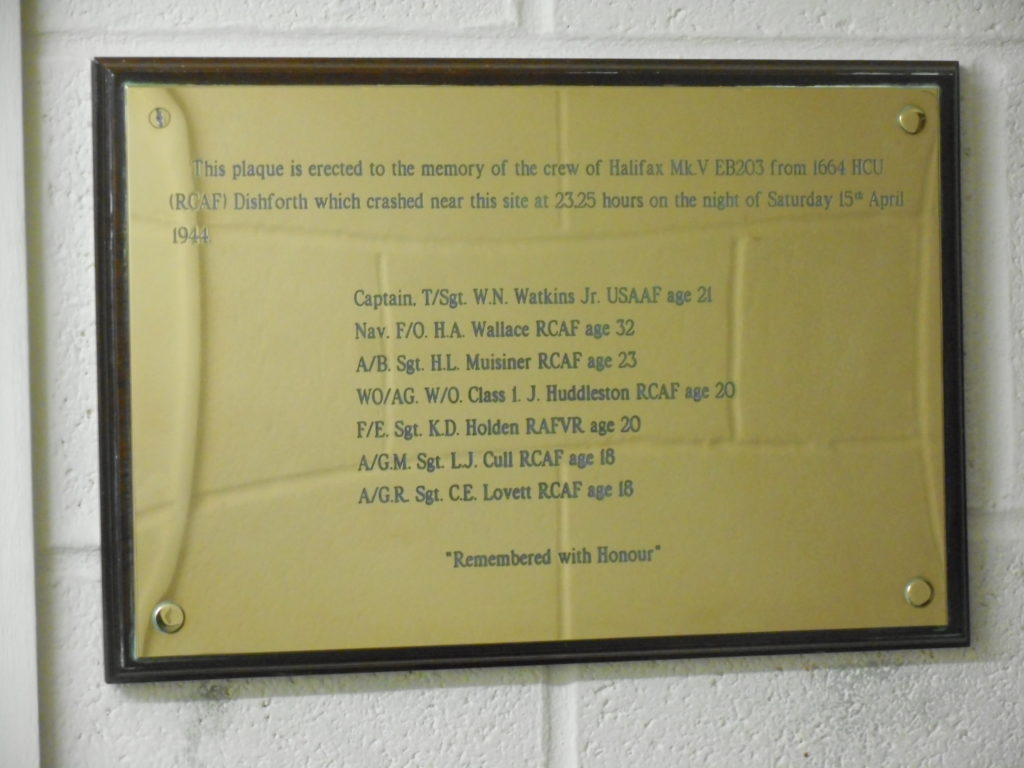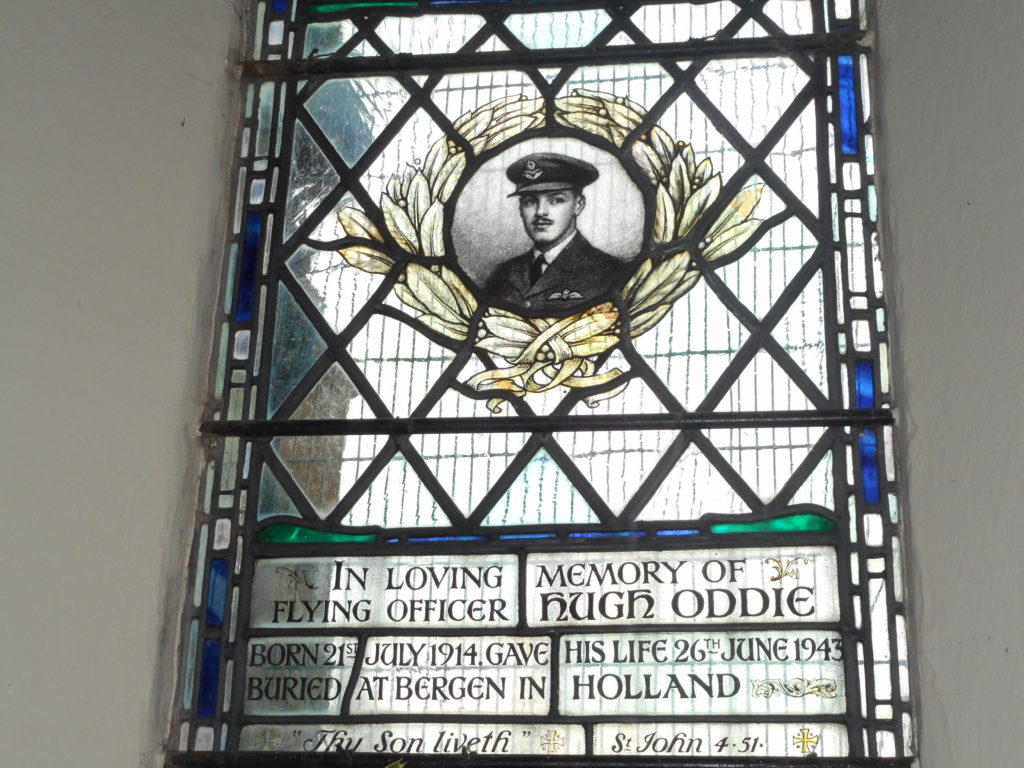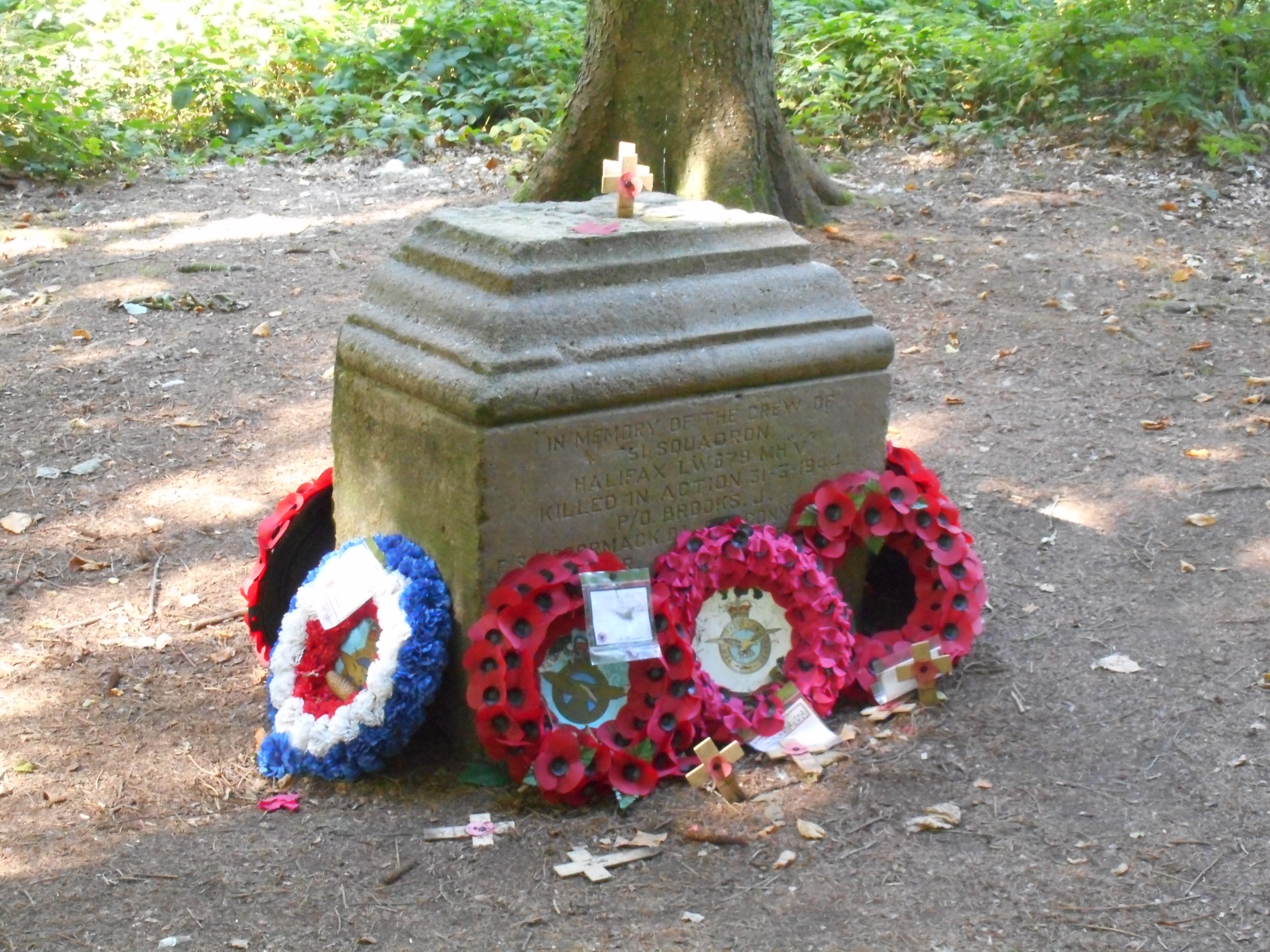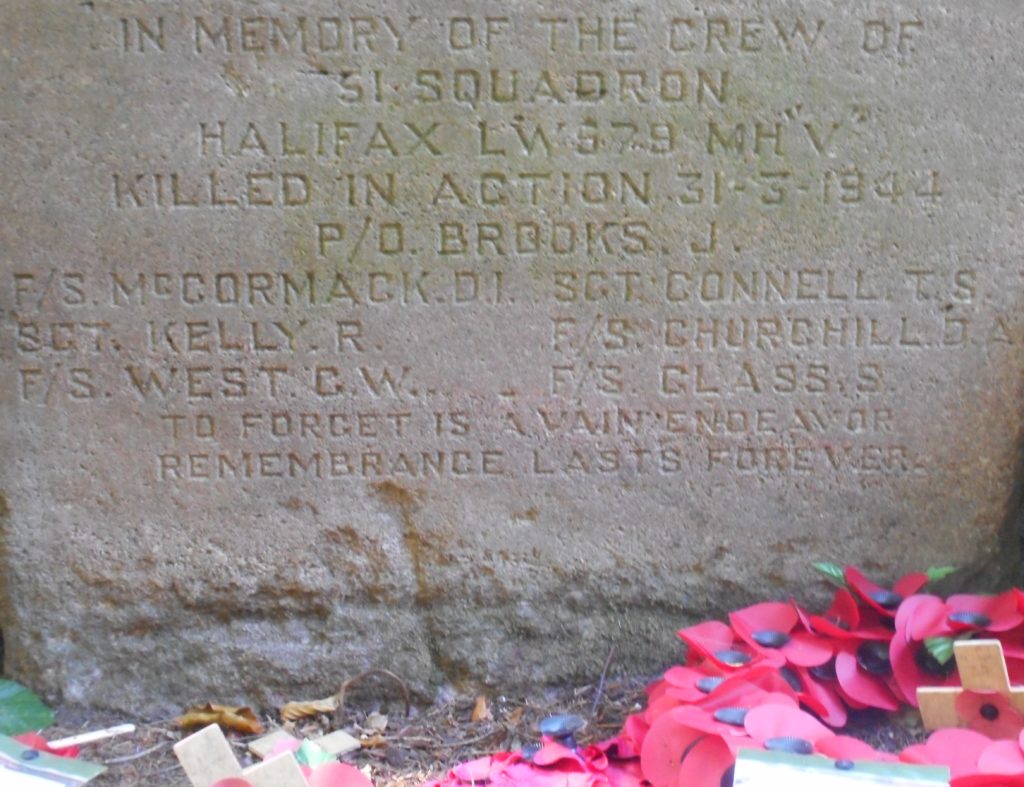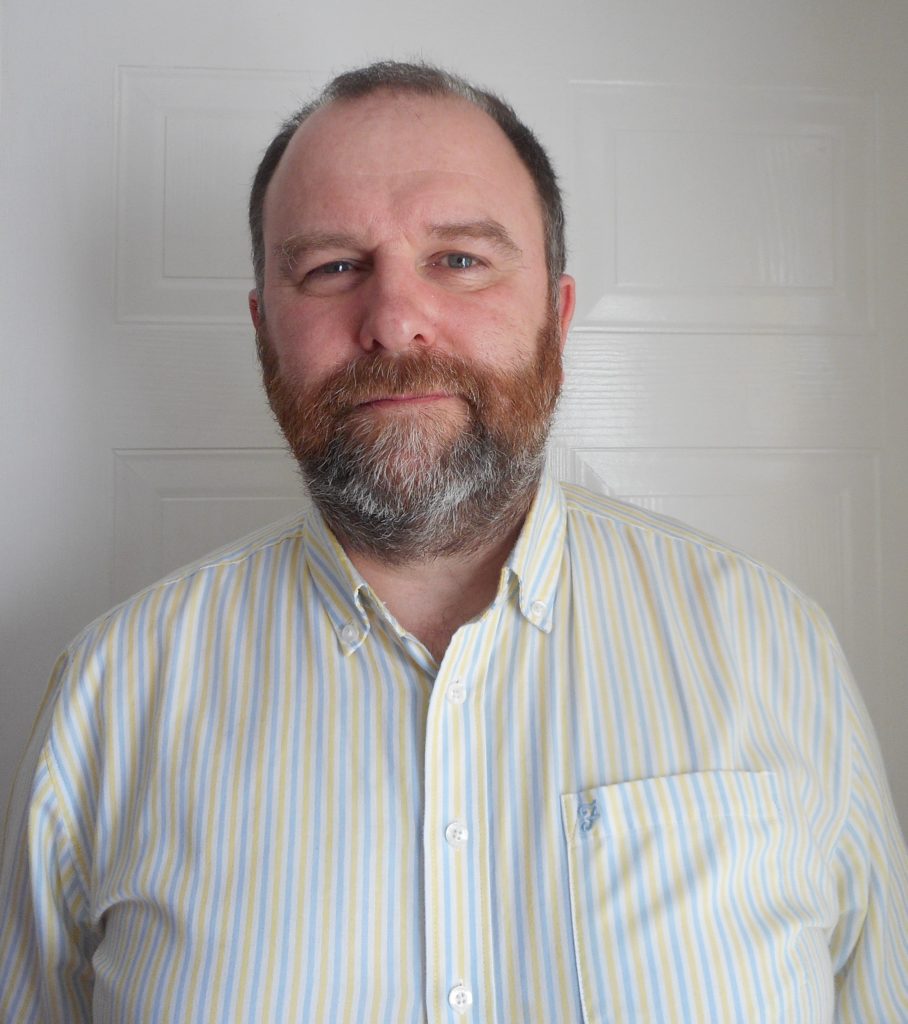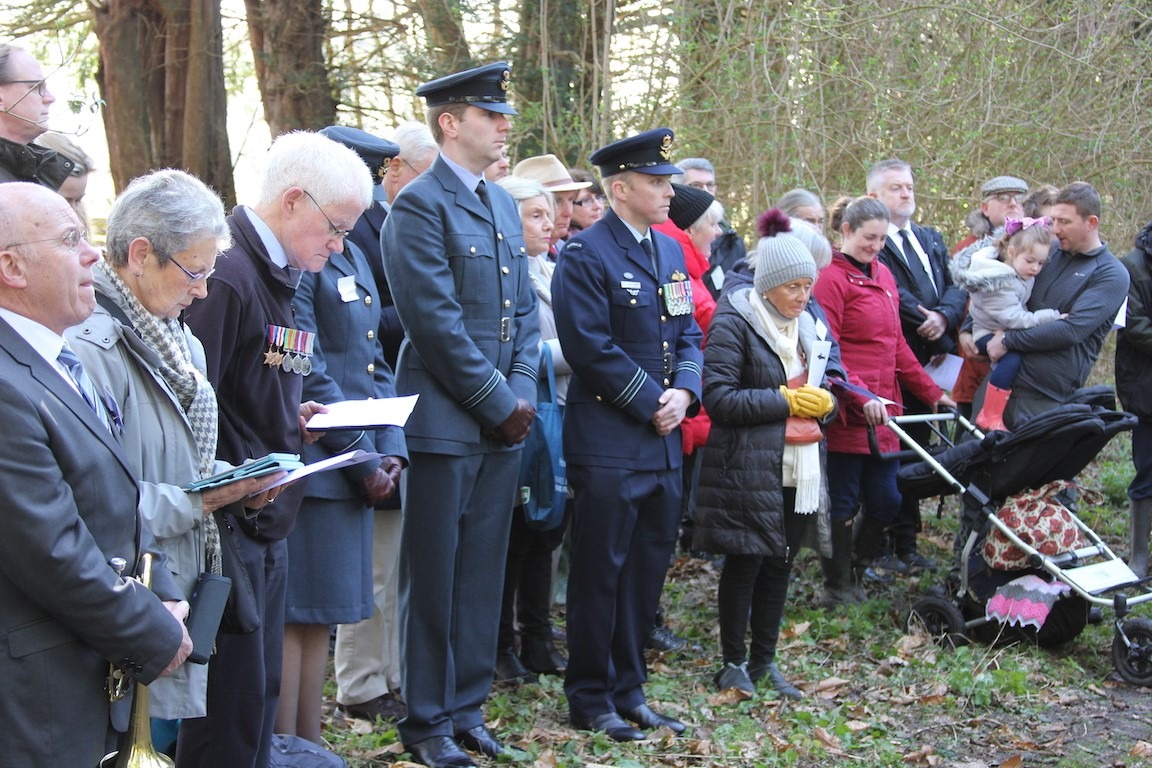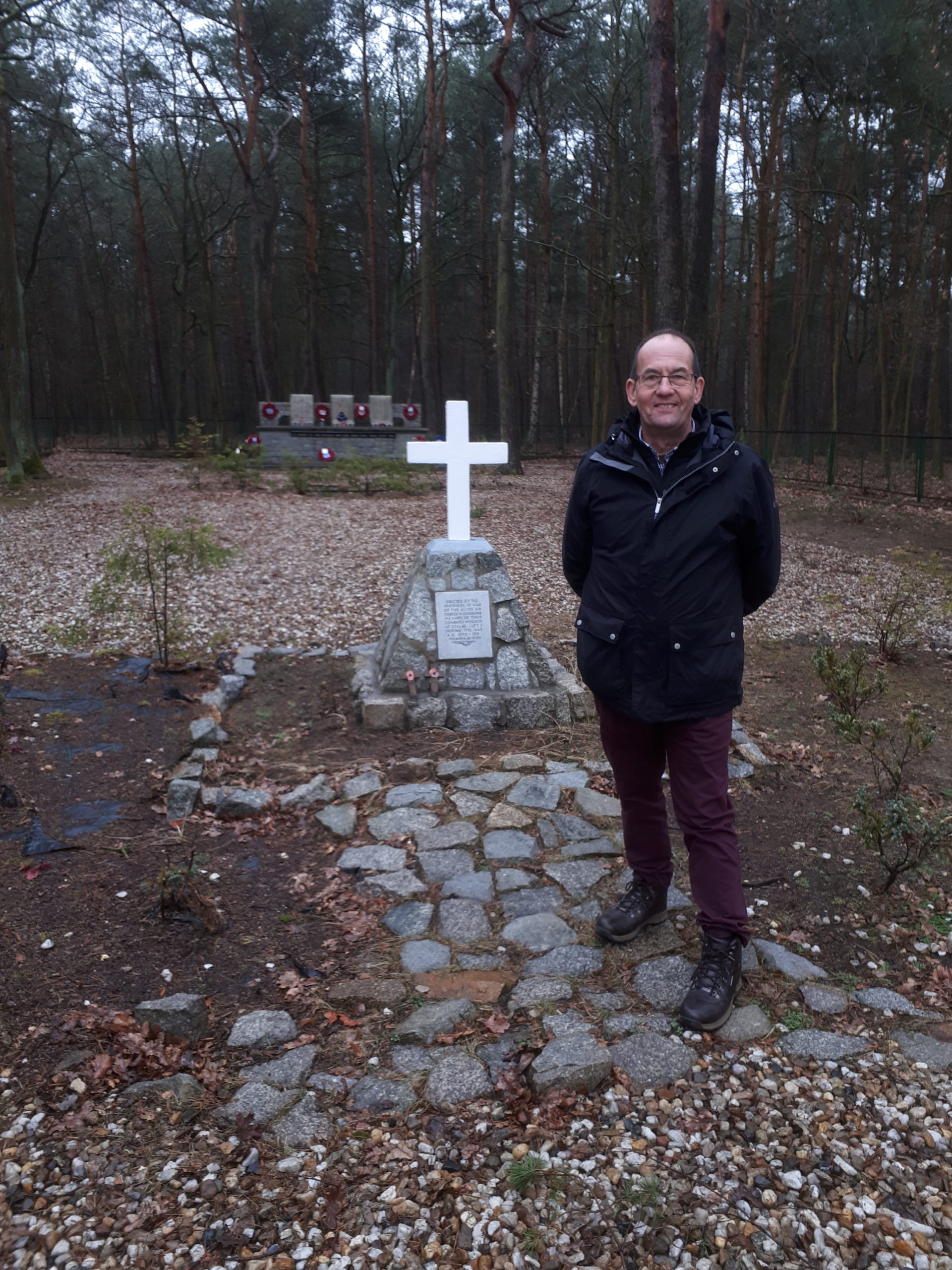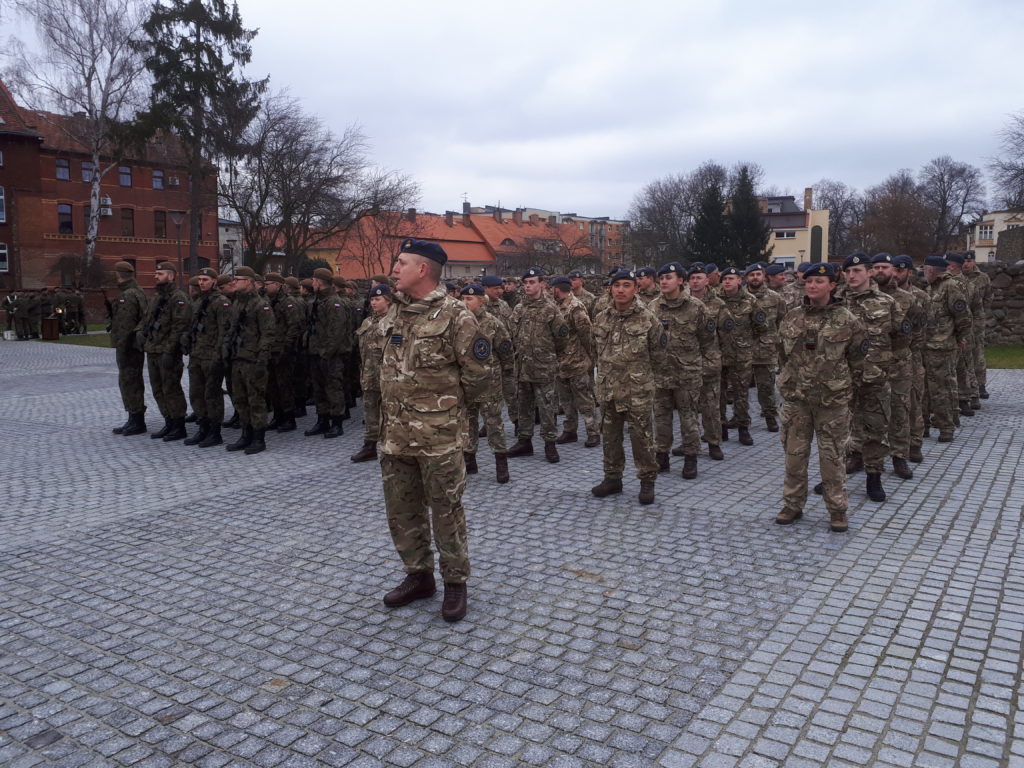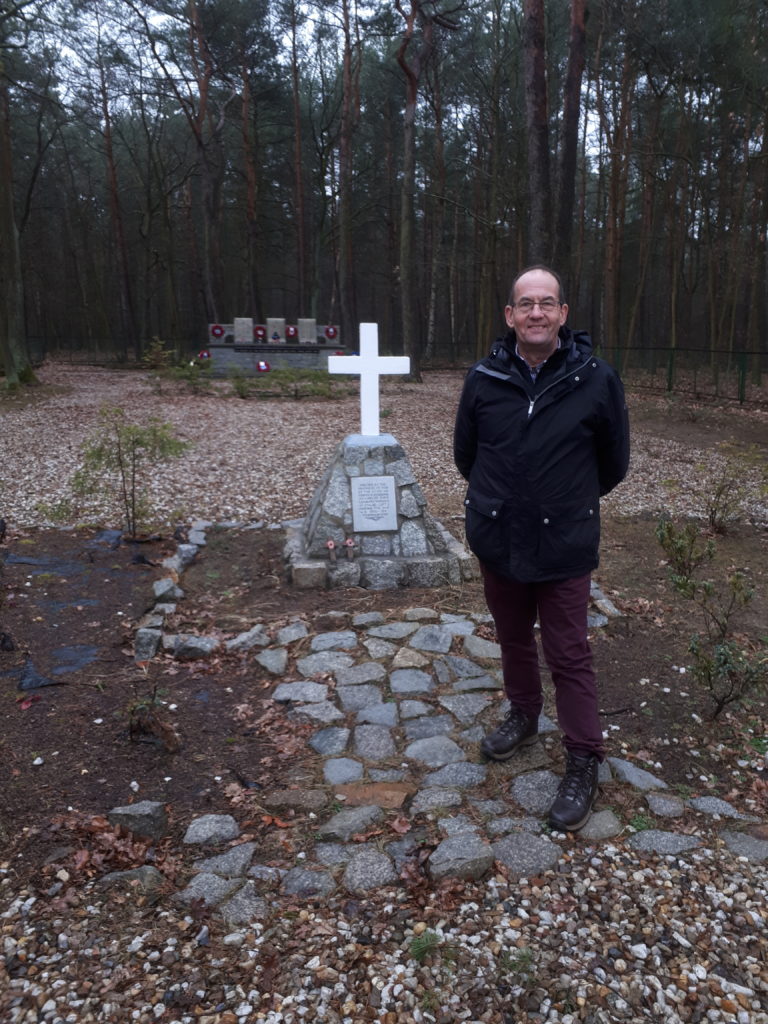The Epitaphs Project was inspired by one particular epitaph: that of 1553032 Sgt. Bill McDonald of 50 Squadron, who was tragically killed by machine gun fire from the ground on 25 October 1942 when his Lancaster was flying at treetop height to avoid flak defences during an attack on Milan. The remainder of the crew were mercifully uninjured and were able to nurse their damaged aircraft back to England where Bill McDonald sadly died in hospital. Because he was killed aboard a safe returning aircraft and therefore features in my forthcoming book (A Few Among Many), I became aware of his epitaph while carrying out my research. It is taken from his last letter home and reads: “Mother, I’ve weighed the risks, which I prefer to living in a world dominated by Nazis. Bill”.
I was so moved by this epitaph that I made it my business to look out for similar ones and was overwhelmed to find just how many of the Bomber Command losses have an epitaph on their headstones (around 30,000) and how varied and poignant they are. I realised immediately what a wonderfully rich addition they would be to the IBCC Losses Database.
It was always my intention to use crowd-sourcing via social media to gather them together, although I planned on beginning the project in autumn 2020 as a ‘dark nights’ project. However, when the corona virus pandemic struck and most people were confined to their homes with little to keep them occupied, it was immediately clear that the project should be brought forward – not only to allow it to come to fruition sooner but also to maintain public engagement while the Centre remains closed and additionally to give people something rewarding to occupy them during this difficult time.
As is invariably the case where IBCC is concerned, the public rose to the challenge admirably and almost forty volunteers came forward and together spent more than 450 hours recording the epitaphs.
Having already spotted that many of the epitaphs are quotes from poems, hymns and other literary works, I asked the volunteers to research them and offer some interpretation for as many as they were able. As expected, many are not in English and we have on-going work in getting more than 400 epitaphs in eleven languages reliably translated.
I also asked them to highlight the ones they found most moving. That there were so many should not be a surprise to us. It was the last deed that the loved ones of each of our almost 58,000 WW2 losses could grant to their their sons, daughters, husbands and wives, so little wonder that a great deal of thought went into them.
What has surprised us all is just what variety is to be found amongst them. There are some that contain the airman’s school motto, some that are in German, Dutch or French specifically so that they can be read in the country in which they are buried, while others are from literary works ranging from Horace (in Latin) to Alfred, Lord Tennyson to Dr. Seuss! We were equally surprised to find a few mildly humorous ones, all belonging to Australian airmen. Some of the most moving ones are none of the above- they are just words from the heart and are every bit as powerful.
What follows is just a flavour of the huge depth and breadth of epitaphs we have so far researched. There is much yet to be done; with 30,000 epitaphs to look through and categorise there will inevitably be some particularly touching ones that we have still to find.
Dave Gilbert
Losses Archivist
Epitaph Examples
Latin:
NEC TIMEO NEC SPERNO
Latin: I neither fear nor despise
(41743 P/O Rex Russell-Forbes)
NON NOBIS SOLUM SED TOTI MUNDO NATI
Latin: NOT FOR OURSELVES, BUT FOR THE WHOLE WORLD BORN
(913313 Sgt Henry Johnston)
DULCE ET DECORUM EST PRO PATRIA MORI
Latin: It is sweet and fitting to die for one’s homeland.
Horace Odes 3:2:13 and also the title of the poem of the same name which refers to the quotation as “that same old lie” by Wilfred Owen.
This features on 15 epitaphs.
FORTI NIHIL DIFFICILE
Latin: To the determined, nothing is difficult
(436323 F/L Bernard Williams)
NON NOBIS SOLUM SED TOTI MUNDO NATI
Latin: NOT FOR OURSELVES, BUT FOR THE WHOLE WORLD BORN
(913313 Sgt Henry Johnston)
Other Languages:
MIZPAH
Hebrew for “watchtower”. As mentioned in the biblical story of Jacob and Laban, making a pile of stones marked an agreement between two people, with God as their watching witness. (Genesis 31:44-50).
(Various airmen)
KAEMP FOR ALT, HVAD DU HAR KAERT, DO, OM SAA DET GAELDER!
From a Danish hymn often used at funerals- Live and die for what you love! Cherish and defend it!
All three verses:
- On your way! Be brave and true! Should the road seem endless, walk where God is near and you never can be friendless.
2. Stars above the clouds still shine through your darkest hour! In the Lord’s own prayer you find courage, peace and power.
3. Live and die for what you love! Cherish and defend it! Then you lift your life above things that waste and end it.
(128521 F/O Arne Helvard)
IL VECUT CE QUE VIVENT LES ROSES, L’ESPACE D’UN MATIN
French: He lived as long as roses live, the span of a morning
(1198786 Sgt Rene Partington)
O RYFEL! CHWERW EI OFWY’N RHOI’I FAEN MUD AR EIFION MWYN
Welsh-‘Oh war! its bitter visitation. Sets its silent stone on gentle Eifion.’
(127970 F/O Henry Clement)
GEROEM ZAGINUV U BOYU ZA CANADU I ZA SIMEISTVU SVOYU. TSARSTVO YOMU NEBESNE
Russian – He died heroically in the battle for Canada and for his family. The Kingdom of Heaven is his.
(J/90310 P/O Nicholas Novack RCAF)
HERREN GAV, HERREN TOG, HERRENS NAVN VAERE LOVET. SIDSTE HILSEN FRA DANMARK
Norwegian: The Lord gave, the Lord brought, the name of the Lord be praised. Last Greetings from Denmark.
(J/89120 P/O John Norgaard RCAF)
BELOVED SON OF J.&A. COATES, ROSSENDALE, LANCS., ENGLAND “HIJ STIERF OPDAT GIJ VRIJ ZOUDT ZIJN”
Dutch: He died so you could be free. Seems to have been added in Dutch so that local people could read it, since he is buried in Bergen-op-Zoom Cemetery, Netherlands.
The one that should perhaps be the motto for IBCC volunteers:
TIS NOT THE DUTY OF THE DAY OR THE RACE YOU HAVE TO RUN BUT THE THING YOU NEEDN’T DO EARNS THE GREAT “WELL DONE”
(999616 Sgt. James Tinker)
Literary quotes:
TO THE WORLD YOU WERE JUST ONE, TO US, ALL THE WORLD
(Adaptation of a quote from Dr. Seuss)
ALL YOU HAD HOPED FOR, ALL YOU HAD, YOU GAVE. LOVINGLY AND PROUDLY REMEMBERED
From O Valiant Hearts by John Stanhope Arkwright
(580435 Sgt Cecil Colbourn)
AT THE GOING DOWN OF THE SUN AND IN THE MORNING WE WILL REMEMBER HIM
From the Fallen Poem by Robert Laurence Binyon (1869-1943)
There are 1160 instances of this quotation.
THEY SHALL GROW NOT OLD, AS WE THAT ARE LEFT GROW OLD
From the Fallen by Robert Laurence Binyon (1869-1943)
There are 100 instances of this quotation.
YOUR HAPPY SMILE IS WITH US ALWAYS. GOOD NIGHT, CHAS., TILL A BRIGHTER DAWN
A Brighter dawn is a reference to Bible Old Testament Proverbs 4:18. There is also an Easter hymn “A brighter dawn is breaking”
(1167363 Sgt Charles Tracey)
SOME CORNER OF A FOREIGN FIELD THAT IS FOR EVER ENGLAND
From The Soldier by Rupert Brooke
There are 109 instances of this quotation, or variants of it.
ONE CROWDED HOUR OF GLORIOUS LIFE IS WORTH AN AGE WITHOUT A NAME R.I.P.
From the poem “The Call”, said to be written by Major Thomas Osbert Mordaunt during the Seven Years War. Also attributed to Sir Walter Scott.
(1183439 Sgt Bernard Willmer)
DUST INTO DUST, AND UNDER DUST, TO LIE, SANS WINE, SANS SONG, SANS SINGER, AND – SANS END!
Rubaiyat of Omar Khayyam Stanza 23
(1253256 Sgt George Jackson)
OUT OF THIS NETTLE, DANGER, WE PLUCK THIS FLOWER, SAFETY
Shakespeare, Henry IV, Part 1, Act 2, Scene 3
(424212 F/O Geoffrey Pinn)
SWIFT DEATH AFLAME WITH OFFERING SUPREME AND MIGHTY SACRIFICE (Excerpt from THE AIRMEN – a poem from the Great War)
(185745 F/O James Rice)
SUNWARD HE CLIMBED AND SLIPPED THE SURLY BONDS OF EARTH
Adapted from “High Flight” by John Gillespie Magee Jr, who died, aged 19, on 11 December 1941
(1257889 Sgt Peter Maxwell)
From the heart:
INTO THE MOSAIC OF VICTORY WAS LAID THIS PRECIOUS PIECE
(58 occurrences)
HERE PAT SLEEPS NEAR HIS CREW OF FOUR IN HIS LITTLE BIT OF TEXAS FOR EVERMORE
(R/97834 F/S Pat Templeton)
HE WENT WITH SONG TO BATTLE STRAIGHT OF LIMB, TRUE OF EYE, STEADY AND AGLOW
(741674 Sgt Norman Cartwright)
WE CANNOT THINK HIS LIFE IS ENDED BECAUSE HE NEVER SAID, “GOODBYE”
(550817 Sgt Stanley Broadhurst)
HIS LIFE A BEAUTIFUL MEMORY, HIS ABSENCE A SILENT GRIEF
(Various airmen)
BUT THE APPLE PETALS, WHEN THEY FELL, WERE WHITE.
(103534 P/O Anthony Scott-Martin)
TO YOU WHO ARE LEFT BEHIND IS A TASK . . . CREATE A NEW ORDER SO ALL MAY LIVE IN PEACE
(R/72335 F/S Reginald Robb)
SO IMPATIENT, FULL OF ACTION, FULL OF MANLY PRIDE AND FRIENDSHIP
(934409 Sgt Eric Dixon)
FATHER, IN THY GRACIOUS KEEPING LEAVE WE NOW OUR LOVED ONE SLEEPING
(970388 Sgt Albert Moorcroft)
A PAGE IN MY BOOK OF MEMORIES IS GENTLY TURNED TODAY. NORMAN JR.
(R/54831 F/S Ernest Jefferies)
TEARS IN MY EYES EVER GLISTEN; MY HEART IS ALWAYS SAD FOR THE HUBBY I LOVED – LORNA
(1271552 Sgt Edwin Carter)
References to fallen siblings:
HE WAS THE FIRST OF THREE TO FALL
(564122 Sgt John Branton)
TO HIS GLORIOUS MEMORY. AT REST WITH HIS THREE BROTHERS. “THY WILL BE DONE”
(40105 F/O Donald Garland)
HIS BROTHERS, JOSHUA AGE 29, LOST OVER ITALY 30.1.1944 AND HAROLD AGE 19, KILLED IN GERMANY 7.4.1945
(1520153 AC1 Dennis Smollan)
IN MEMORY OF JIMMY AND HIS TWO BROTHERS PETER AND KENNETH. MOTHER, FATHER AND GEOF
(581294 W/O James Nutt)
WITH HIS BROTHERS LEONARD AND GORDON, WHO ALSO DIED FOR THEIR COUNTRY
(934086 Sgt Lionel Perry)
References to children
It is often thought that the majority of airmen were single but in fact at least 12,000 of the losses on the memorial walls were married and no doubt many had children:
ALSO HIS WIFE LILIAN, CHILDREN BRIAN AND NOVA KILLED BY ENEMY ACTION. THEY LIVE WITH US IN MEMORY STILL
(1446712 AC2 Royal Potter)
“RESTING WHERE NO SHADOWS FALL” EVER REMEMBERED BY WIFE AND FOUR LITTLE ONES
(755649 Sgt Thomas Walker)
GONE, BUT NEVER TO BE FORGOTTEN BY YOUR LOVING WIFE AND THREE LITTLE SONS
(1894705 Sgt Leslie Gower)
ALSO BABY SON THOMAS FRANCIS BORN AFTER HIS FATHER’S DEATH. DIED AGE SEVEN MONTHS. “UNSEEN THEY’RE NEAR ME”
(655460 W/O Thomas Heyes)
DEEPLY LOVED AND MISSED BY WIFE LYDIA, AND CHILDREN SHEILA AND MICHAEL
(1896100 Sgt Joseph Plant)
EVER REMEMBERED BY WIFE NANCY, CHILDREN ENA, ROBERT, JOAN, MAM, SISTERS & BROTHERS
(1034631 W/O Ralph Howe)
GOODBYE, DADDY. MICHAEL AND GEORGINA
(75471 S/L George Alexander)
MY DEAREST HUSBAND ERIC. I’LL SEE YOU AGAIN, SUNSHINE. WIFE JEAN, BABY TREVOR
(157916 F/O Eric Bolton)
Gentle humour:
NICE GOING MICHAEL! FAMILY AND FRIENDS PROUD. GOOD LUCK NOW MATE
(426507 F/S Louis Baker)
A GREAT SURFMAN FROM BYRON BAY, AUSTRALIA’S EASTERLY POINT
(405576 F/S John Dening)
A GREAT INNINGS, PAL
(423710 Sgt Jack Frazer)
Flight references:
HE DIPPED HIS WING AND FLEW BEYOND THE HORIZON OF OUR SIGHT. A PROUD MEMORY
(741435 Sgt James Ward)
HE’S OUTSOARED THE SHADOW OF OUR NIGHT AND LEFT THE VIVID SKIES SIGNED WITH HIS HONOUR
(1604944 Sgt Mervyn Tansley)
AS A BOY HE LONGED TO FLY, LATER FLEW, BUT TO DIE FOR HIS COUNTRY. GOD BLESS HIM
(62277 F/L Tristan Salazar)
A PATHFINDER. “PEACE”
(1289138 F/S Donald Gooby)
ONE OF OUR AIRCRAFT IS MISSING BUT THE CREW IS SAFE
(1338950 Sgt Raymond Bates)
Last Letters/messages:
MOTHER, I’VE WEIGHED THE RISKS, WHICH I PREFER TO LIVING IN A WORLD DOMINATED BY NAZIS. BILL.
(553032 Sgt. William McDonald)
DON’T WORRY: I AM ALRIGHT
(926082 Sgt Frank Wood)
HIS LAST MESSAGE TO ENGLAND “MISSION ACCOMPLISHED” LOVED BY ALL. A GENTLEMAN
(43977 F/O Arthur Mitchell)
“NOW I AM DEAD, BUT LIVE, LIVE IN YOUR LIFE AND LOVE” J.F.B.
(1395372 Sgt John Burton)
School/ University mottoes:
OF WITHAM, ESSEX “GARDE TA FOY”
Old French: Keep Your Faith – the motto of Magdalene College, Cambridge
(40216 F/O Henry Evitt)
PAULATIM ERGO CERTE “SUNSET AND EVENING STAR AND ONE CLEAR CALL FOR ME”
Latin: Slowly therefore surely – the motto of Latymer Upper School, which Joseph attended.
Poem is Crossing the Bar by Alfred, Lord Tennyson, later set to music as a hymn.
Latymer School lost an incredible 26 of its alumni in Bomber Command.
(1281206 Sgt. Joseph Medhurst. According to Latymer, who have produced a marvellous book commemorating their fallen, he was known to his friends as “Mouse”).
BELOVED SON OF J. & M. TOWNS OF WHISSENDINE, RUTLAND, ENGLAND “QUASI CURSORES”
Latin – LIKE RUNNERS – the motto of Oakham School, Rutland
(1182661 Sgt George Towns)
“RATHER DEATHE THAN FALSE OF FAYTHE”
Motto of Battersea Grammar School
(1253462 Sgt William Holmes)
QUANT JE PUIS STONYHURST
French: As much as I can – Stonyhurst School Motto
(952897 Sgt Henry Halliwell)
Brief but speaks volumes:
I AM A JEW
(1158295 Sgt. Israel Jacobovitch)
Mysterious:
HOME, SULPHUR SPRINGS TEXAS, U.S.A. UNKNOWN BY HIS COUNTRY, YET WHO GAVE MORE?
Probably a reference to the fact that he was forced to enlist in Canada while his own native USA was neutral.
(J/15855 P/O William Tyler RCAF)
DESSINATEUR, PAYSAGISTE ET LINEAIRE (French: DESIGNER, LANDSCAPER AND UNSWERVING)
(J/88344 P/O Joseph Huot RCAF)
To look up those lost in Bomber Command click here
For other stories and news items please see our Blog Space here
